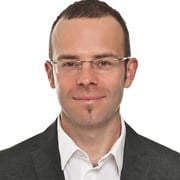In conventional Czochralski growth of single-crystalline silicon, a high purity quartz crucible holds the silicon melt from which the crystal is grown. The Czochralski process, which is a typical batch process, has been refined and optimized for mass production of silicon single crystals with diameters from 6” to 8” and charge weights up to 150 kg for PV applications. Since the silicon is melted in a quartz crucible, the ingot contains significant levels of oxygen due to dissolution of the crucible. Solar cell manufactures attempting to limit negative impact of oxygen and related defects will ask for much lower oxygen levels in future.
This project builds on SINTEF's and IIT Bombay's internationally leading position in research on silicon for solar cell applications. Both research partners will build a relationship along the entire silicon photovoltaic value chain, where Norway has natural advantages on the upstream in silicon ingot and wafer manufacturing, and India on the downstream on solar cell and module production. The project is supported by Norwegian silicon ingot and wafer manufacturers, Norsun and Norwegian Crystals, and Indian solar cell and module manufacturer Mundra Solar, which is part of the Adani Group. This collaboration will lead to mutual exchanges of knowledge and contribute to further development of SINTEF and IIT Bombay in close collaboration with the industry.

